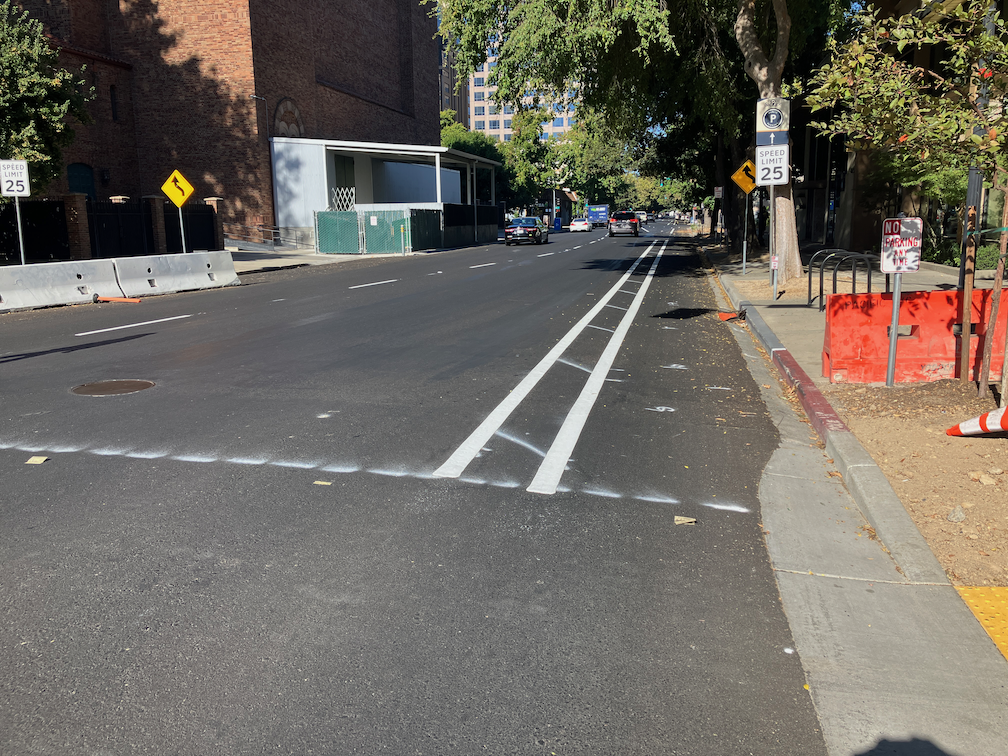It is fall in Sacramento, trees are turning, leaves are falling. It is my favorite time of year, in part due to the knowledge that it will be over soon, only memories and photos. While out walking the last two days, I have been watching little breezes create leaf-fall, more fascinating to watch than snowfall. The four ginkgo trees back of my apartment are at their peak of brilliant yellow color, and the ground is carpeted in yellow. Blocks with a variety of trees are a kaleidoscope of colors.
This morning landscape workers were out blowing leaves into piles, but they were falling faster than they were moved. As I write, it is raining lightly, which will accelerate the leaf fall.

What is not to like? Well, what happens over the next few days. The wet leaves will start to rot, which is a natural process. But any leaf area where cars are allowed to drive will grind the leaves into fine particles, and those particles with turn into what I call leaf slime. Leaf slime is incredibly slippery, and it is a clear and present danger to bicyclists (and walkers). The Class 4 separated bikeways probably won’t be too bad, since bicycles don’t grind up the leaves, and the city may even get around to sweeping the bikeways. But the regular Class 2 bike lanes will be horrible. Cars will drive over the leaves, and start the process. The city very rarely sweeps bike lanes. They may be partially cleared if residents have illegally piled leaves in the bike lane, and the claw picks up the leaf piles, but the very act of scraping up the piles leaves a thin leaf slime layer.
So, it is time of year to avoid bike lanes, until there is either maintenance or enough rain to wash away the leaf slime. Ride in the general purpose lane. Yes, you will get yelled at by asshole drivers whose car isolates them from the realities of roadways, but at least you won’t be slipping and falling on the leaf slime. Beware the leaves of December.











 Some people misunderstand where to place their trash cans, but most people know and don’t care – I’ve had extensive conversations with many such people – they don’t think that my right to the bike lane supersedes their right to put their trash can wherever they damned well please. The photo at right is on Tupelo Drive in Citrus Heights, trash cans placed directly in a marked bike lane. Notice that it would have been easy to place them in the parking “lane” instead, but the residents chose not to. This is not just a Citrus Heights problem, this photo could as well be any street anywhere in the region.
Some people misunderstand where to place their trash cans, but most people know and don’t care – I’ve had extensive conversations with many such people – they don’t think that my right to the bike lane supersedes their right to put their trash can wherever they damned well please. The photo at right is on Tupelo Drive in Citrus Heights, trash cans placed directly in a marked bike lane. Notice that it would have been easy to place them in the parking “lane” instead, but the residents chose not to. This is not just a Citrus Heights problem, this photo could as well be any street anywhere in the region.


